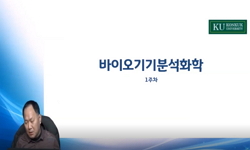Purpose. This study evaluated how implant scan body (ISB) design affects trueness and operator convenience of digital implant impressions. The null hypothesis stated no significant differences in trueness or usability between ISB designs. Materials an...
http://chineseinput.net/에서 pinyin(병음)방식으로 중국어를 변환할 수 있습니다.
변환된 중국어를 복사하여 사용하시면 됩니다.
- 中文 을 입력하시려면 zhongwen을 입력하시고 space를누르시면됩니다.
- 北京 을 입력하시려면 beijing을 입력하시고 space를 누르시면 됩니다.



Effects of scan body material, length and top design on digital implant impression accuracy and usability: an in vitro study
한글로보기https://www.riss.kr/link?id=A109793131
-
저자
Julian Hessel Baranowski (Department of Prosthodontics/Dental Materials Science, The Sahlgrenska Academy, University of Gothenburg, Gothenburg, Sweden) ; Victoria Franke Stenport (Department of Prosthodontics/Dental Materials Science, The Sahlgrenska Academy, University of Gothenburg, Gothenburg, Sweden) ; Michael Braian (Swedish Organisation for Computer Aided Digital Dentistry, SWECADD, Malmö, Sweden) ; Ann Wennerberg (Department of Prosthodontics/Dental Materials Science, The Sahlgrenska Academy, University of Gothenburg, Gothenburg, Sweden)
- 발행기관
- 학술지명
- 권호사항
-
발행연도
2025
-
작성언어
English
- 주제어
-
등재정보
KCI등재,SCIE,SCOPUS
-
자료형태
학술저널
-
수록면
125-136(12쪽)
- DOI식별코드
- 제공처
-
0
상세조회 -
0
다운로드
부가정보
다국어 초록 (Multilingual Abstract)
Purpose. This study evaluated how implant scan body (ISB) design affects trueness and operator convenience of digital implant impressions. The null hypothesis stated no significant differences in trueness or usability between ISB designs. Materials and methods. A cast metal model with nine implants and silicone mucosal masks (1 mm and 3 mm thickness) were used. Seven ISB prototypes were developed by modifying a commercial ISB (ELOS Accurate IO2A-B, ELOS Medtech) in four aspects: length (30% shorter and 50% longer), material (polyetheretherketone (PEEK) or titanium), surface reflectance (polished or aluminium oxide-blasted titanium), and top surface (concave top and screw holes enlarged by 100% and 200%). Each prototype was scanned ten times using an intraoral scanner (NeoScan1000, Neoss), with a desktop scanner (E3, 3Shape) providing reference scans. Deviations in depth, angulation, and rotation were analyzed in CAD software (GOM Inspect, Zeiss). Statistical analysis included the Welch test (P < .05) and Games-Howell post hoc test (P < .007). Results. Material affected depth accuracy; blasted titanium (89 ± 86 µm) and polished titanium (80 ± 72 µm) outperformed PEEK (149 ± 131 µm). Shorter ISBs showed greater angular deviations (0.64 ± 0.70°) compared to control (0.31 ± 0.21°). Rotational deviations were not significant. Scanning times increased for reflective, longer ISBs with reduced top areas, while shorter ISBs improved usability. Conclusion. ISB design influences digital impression accuracy. Titanium ISBs with reduced reflectivity improve trueness, and larger screw holes enhance usability. Shorter ISBs reduce scanning time but compromise angular trueness. Stitching errors remain the primary source of depth inaccuracies.
동일학술지(권/호) 다른 논문
-
- 대한치과보철학회
- Fateme Ghorbanpour Arani
- 2025
- KCI등재,SCIE,SCOPUS
-
- 대한치과보철학회
- Mine Helvacıoğlu Özkardeş
- 2025
- KCI등재,SCIE,SCOPUS
-
- 대한치과보철학회
- Hye Jeong Lee
- 2025
- KCI등재,SCIE,SCOPUS
-
- 대한치과보철학회
- Míria Rafaelli Souza Curinga
- 2025
- KCI등재,SCIE,SCOPUS




 ScienceON
ScienceON






